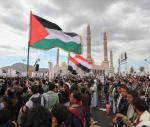You are here
How Melbourne rescheduled its future
Nov 14,2021 - Last updated at Nov 14,2021
BOSTON — Melbourne is not the most distinctive of Australia’s cities. It does not have Sydney’s sandy beaches or Brisbane’s rugged, “Crocodile Dundee” appeal. Lying on a flat plain, crossed by a meandering river, it is an urban agglomeration of some 10,000 square kilometres — six times the size of London and 12 times the size of New York City, consisting of a dense urban core surrounded by sprawling suburbs.
Yet Melbourne often tops international quality-of-life rankings. It has a rich street culture and a thriving arts scene; the central business district (CBD) is crowded at all times, as are the new public spaces created from the conversion of former brownfields, such as Federation Square and the South Wharf area along the Yarra River.
The story of Melbourne’s success can be traced to a municipal master plan and one of its main proponents, Rob Adams. Born in Zimbabwe, Adams studied architecture at the University of Cape Town, where he developed a singular concept that would turn him into a key player in the transformation of Melbourne.
During Adams’ time in Cape Town in the late 1960s, the university was preparing for a significant expansion of its student body and faculty. The typical approach would have been to extend the physical campus by creating new buildings or enlarging existing ones. But perhaps out of concern about protecting the university’s identity, or simply due to the topographical constraints of its location on the slopes of Table Mountain, the administration instead opted for an unprecedented solution: To expand across time rather than across space. By adding evening classes and adjusting the academic calendar, the university increased its capacity without becoming physically larger.
Having witnessed this process as a student, Adams was eager to bring the rescheduling ethos to the urban environment. When he arrived in Melbourne in 1983 to work in the municipal administration, the city was struggling. The CBD, in particular, had been reduced to a ghost town by economic uncertainty and mass emigration.
To change the city’s trajectory, Adams recalled the principle of rescheduling he had learned at university. At the time, Melbourne’s CBD infrastructure was active only from Monday to Friday, from around 9am to 5pm This limited period seemed natural, it was the norm for business districts around the world, owing to the modernist urban planning dogmas of strictly separated functional neighbourhoods. But Adams wondered if this setup made the best use of the city’s resources.
Encouraged by Adams, following the property market crash of the late 1980s, Melbourne began converting empty office buildings into new residences and reimagined cultural spaces, rescheduling the stagnant district. Over the course of a few years, the face of the CBD began to change. Increasingly, it was occupied at every hour, every day of the week. The transformation gained international attention in 2002 with the establishment of Federation Square, a huge public event space built on the site of an old railway yard. This 24/7 cultural center has been an overwhelming success.
Such efficient, frugal interventions can seem inconspicuous, not unlike Melbourne itself. But the lessons of this transformation are at the center of current urban planning discourse. The twentieth century left us with inefficient peaks-and-troughs urban infrastructure that has disrupted life and harmed residents in ways large and small, from traffic jams to strained electricity grids and overwhelmed hospitals. We can no longer afford to waste resources, given our existential battle against climate change. Rescheduling our cities and increasing their densities and mixture of uses is one of the most powerful ways to make them more sustainable.
Rescheduling 80 hectares of asphalt away from cars by widening footpaths and creating new open spaces also has a key social benefit: Increasing the number of interactions between people. When every available square metre is used efficiently throughout the day, it becomes a magnet for sustained human contact. In Melbourne, even the narrow, dimly lit alleys behind Federation Square are bursting with trendy clubs and restaurants, as they can rely on a constant flow of visitors.
Today, equipped with twenty-first-century tools, the heirs of the “Melbourne school” of urban planning can take the process of rescheduling to new levels, making changes as radical as abolishing rush hour itself. After all, a traffic jam is only the predictable consequence of assuming that the entire population should follow the same daily schedule. If urban managers rethink that premise, they could obliterate one of the most hated features of contemporary cities.
To reschedule rush hour into oblivion, we will need to build public digital platforms capable of identifying and rewarding virtuous behaviour — such as peak pricing schemes for toll roads and electric grids. The flexibility of remote work, which has grown enormously in the wake of the COVID-19 pandemic, could help accelerate the transition to a truly rescheduled city, in which individual behaviors no longer have to follow an identical choreography. Some employees could go to the office at 9am; others could join a morning meeting via video call and arrive at 11am Rush hour could be smoothed away.
If this vision is realised, our cities will become not only more sustainable but more sociable and less clogged. And we will have the powerful paradigm established by Melbourne under Adams’ multidecade stewardship to thank for it.
Carlo Ratti, director of the Senseable City Lab at MIT, is co-founder of the international design and innovation office Carlo Ratti Associati. Copyright: Project Syndicate, 2021. www.project-syndicate.org












